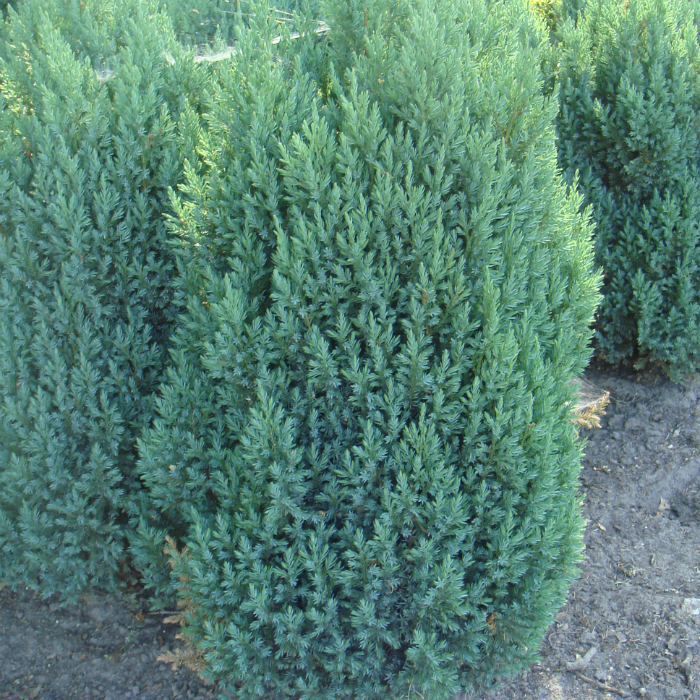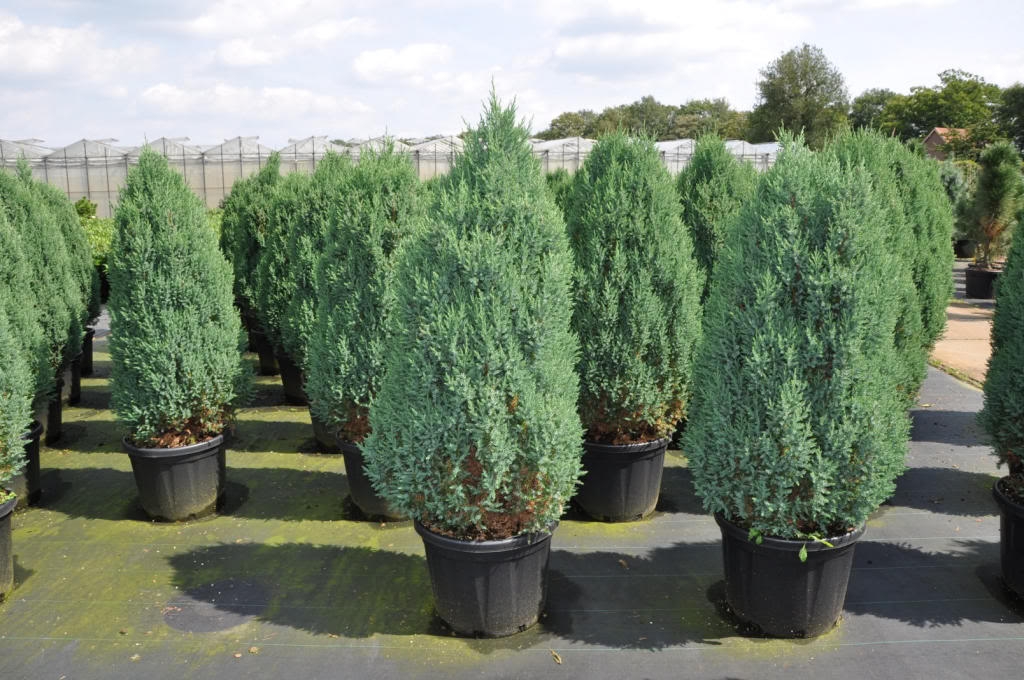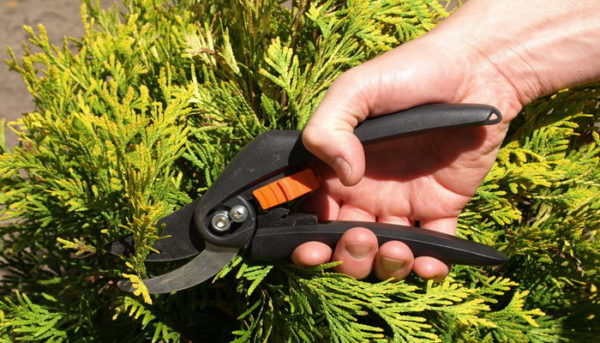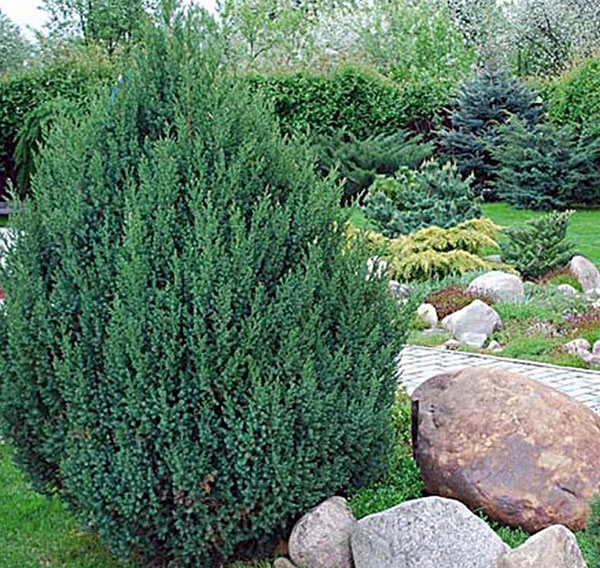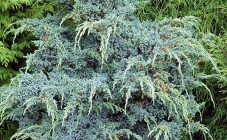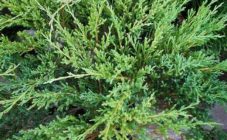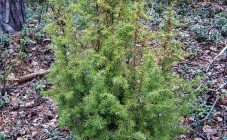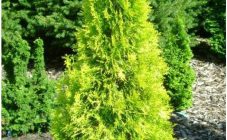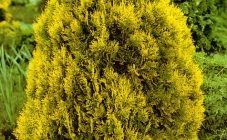Content:
More than 60 species of wild-growing junipers are now known. But breeders are constantly working to create decorative varieties that differ in appearance. Strict juniper has gained quite a popularity, because it is not picky about growing conditions and care.
Briefly about culture
Junipers are a group of evergreen plants from the cypress family. Most of the species are compact shrubs, but there are also quite tall trees (up to 4 m). Leaves are small needles from 1 to 1.5 cm long, collected in bunches. They last up to 4 years.
Common juniper has medicinal properties. The rest of the forms serve only decorative functions.
Juniper Strickt Description
Juniper Stricta was obtained in Holland in the middle of the 20th century. Its homeland is Asian countries, therefore it is called Chinese.
Due to its decorative appearance and winter hardiness, it quickly spread throughout Russia. The average lifespan is 100 years.
There are several common varieties that differ in appearance:
- Juniper Chinese Blue Alps - has a thick, voluminous crown with falling branches.
- Juniper Chinensis Strickta - have a teardrop-shaped crown, the size of which reaches 2.5 m in height and 1.5 in width. The color of the needles changes from blue to silver due to temperature fluctuations.
- Juniper Chinese Old Gold - small wide bushes (0.5 m by 1 m).
- Juniper Chinese Strikta Variegata is a slow-growing variety, covered with blue-green needles and branches with a white-variegated color.
Crops are winter-hardy, grow well in Moscow, Moscow region and more northern latitudes.
Landing
Juniper Chinese Strikt is propagated in two ways:
- seed;
- by cuttings.
But the first method is rarely used because it is too time consuming:
- in the fall, planting material is stratified at home and placed in a pot with soil;
- for the winter (150 days) containers are left outside;
- in the spring (in May) they are planted in open ground.
For this:
- planting material is harvested (length - 15-20 cm);
- slices are lubricated with a root formation stimulator;
- cuttings are placed in a loose soil mixture and covered with foil;
- the seedlings are periodically ventilated;
- After about 70 days, the rooted cuttings are transplanted to a permanent place of growth.
Most gardeners purchase seedlings from specialized nurseries. You need to buy only those copies that are in the boxes. Without a nutrient medium, the roots dry out, and the plant gradually dies.
Planting and caring for the Chinese Strickta juniper is not difficult. He prefers sunny areas. In the shade, the needles lose their original bluish tint.
Optimal planting time:
- mid-spring;
- September.
The culture prefers nutritious moist soil. The pH is neutral or slightly acidic. The soil mixture is prepared from:
- turf, sand and peat (1: 1: 2);
- equal parts of sand, peat, coniferous earth.
How to plant Strickt juniper:
- The pit is made 2-3 times larger than the volume of the root system. For adult plants, grooves 70 × 70 cm are prepared. Drainage is laid at the bottom (20 cm of chipped bricks).
- Maintain the distance between the bushes - at least 1 m.
- The juniper seedling is buried so that the root collar is 8-10 cm above the edge of the pit.
- The earth is lightly crushed and moistened.
Juniper mulching is acceptable:
- pine bark;
- withered grass;
- sawdust;
- a sliver;
- non-woven fabric.
Care features
Caring for the Strict variety consists in timely watering, loosening and periodic feeding:
- the soil is moistened about once a month (if a drought is established, then sprinkling is organized once a week);
- after watering, the soil is loosened to provide the roots with a sufficient amount of oxygen (at the same time, weeds are removed);
- in spring the plant is fed with complex mineral fertilizers.
Juniper easily tolerates pruning. Even at home, the crown can be given almost any shape. The procedures are best done in spring or autumn.
Adult plants are not afraid of frost. However, young seedlings need to be prepared for wintering:
- tie branches around the trunk so that snow does not damage them;
- cover the juniper bush with burlap or nonwoven fabric;
- mulch the soil in the near-trunk circle with peat (layer 10 cm) and insulate with coniferous spruce branches.
The Strictt juniper has a peculiarity. The needles, which are inside the crown and in contact with other branches, become brownish-red. In the spring, it is removed in order to return the plant to its decorative appearance. At the same time, they carry out sanitary pruning, removing broken and injured branches. This is not an easy procedure because the shrub is very prickly. Hands must be protected with gloves.
Diseases and pests
The greatest harm to junipers is caused by such pests as:
- Aphid - sucks sap from the plant. At the first signs of the presence, the bushes are washed with soapy water, protecting the root zone from the solution. With a massive invasion, Fitoverm is used.
- Spider mite - envelops juniper branches with cobwebs, causing them to die off. At the initial stage, juniper bushes are treated with infusion of dandelion, garlic or colloidal sulfur. In advanced cases, acaricides are used.
- Juniper scabbard - feeds on cell sap. When spreading insects, drugs Aktara, Confidor, Calypso are used.
Juniper Strickta is susceptible to diseases:
- Drying of branches - the needles turn yellow and fall off, over time, shoots die off. The affected fragments are removed, the plant is treated with fungicides. If the disease has spread to the entire juniper bush, then it is uprooted and burned, the soil is disinfected.
- Rust - orange growths form on the branches. The disease is not treated, the infected shoots are destroyed. For prevention, Stricts bushes are sprayed with Tilt, Bayleton, Ridomil Gold MC.
- Brown shute - after wintering, the needles acquire a yellow or brown color. Plants are treated with compounds Quadris, Ridomil Gold MC, Strobi. For preventive purposes, they are sprayed with fungicides.
To prevent pathogens from developing immunity to certain drugs, the compositions must be alternated.
Application in landscape design
Juniper Strickt is in demand among landscape designers. The culture looks spectacular in single and group plantings. Used to decorate gardens, parks, alleys. Shrubs look good in rockeries and other rocky objects. In cities, they are often grown in containers.
Juniper can be used to create a hedge.To prevent the plant from stretching up and actively bush, it is regularly trimmed. The landings gradually close and form a decorative "fence".
Juniper Strickt is a beautiful and unpretentious crop that can beautify any landscape. Even a novice gardener can cope with its cultivation.
